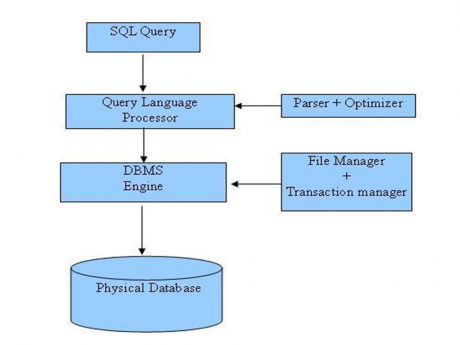SQL tutorial gives unique learning on Structured Query Language and it helps to make practice on SQL commands which provides immediate results. SQL is a language of database, it includes database creation, deletion, fetching rows and modifying rows etc.
SQL is an ANSI (American National Standards Institute) standard but there are many different versions of the SQL language.
What is SQL?
SQL is structured Query Language which is a computer language for storing, manipulating and retrieving data stored in relational database.
SQL is the standard language for Relation Database System. All relational database management systems like MySQL, MS Access, Oracle, Sybase, Informix, Postgres and SQL Server uses SQL as standard database language.
Also they are using different dialects, Such as:
Why SQL?
SQL History
SQL Process
When you are executing an SQL command for any RDBMS, the system determines the best way to carry out your request and SQL engine figures out how to interpret the task. There are various components included in the process. These components are Query Dispatcher, Optimization engines, Classic Query Engine and SQL query engine etc. Classic query engine handles all non-SQL queries but SQL query engine won't handle logical files.
Following is a simple diagram showing SQL Architecture:  SQL Commands
SQL Commands
The standard SQL commands to interact with relational databases are CREATE, SELECT, INSERT, UPDATE, DELETE, and DROP. These commands can be classified into groups based on their nature:
DDL - Data Definition Language
| Command | Description |
| CREATE | Creates a new table, a view of a table, or other object in database |
| ALTER | Modifies an existing database object, such as a table. |
| DROP | Deletes an entire table, a view of a table or other object in the database. |
DML - Data Manipulation Language
| Command | Description |
| INSERT | Creates a record |
| UPDATE | Modifies records |
| DELETE | Deletes records |
DCL - Data Control Language
| Command | Description |
| GRANT | Gives a privilege to user |
| REVOKE | Takes back privileges granted from user |
DQL - Data Query Language
| Command | Description |
| SELECT | Retrieves certain records from one or more tables |
You liked the article?
Like: 0
Vote for difficulty
Current difficulty (Avg): Medium

TekSlate is the best online training provider in delivering world-class IT skills to individuals and corporates from all parts of the globe. We are proven experts in accumulating every need of an IT skills upgrade aspirant and have delivered excellent services. We aim to bring you all the essentials to learn and master new technologies in the market with our articles, blogs, and videos. Build your career success with us, enhancing most in-demand skills in the market.